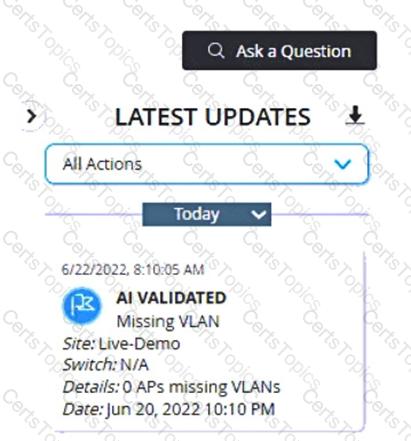Juniper JN0-451 Exam Dumps FAQs
Q. # 1: What is the Juniper JN0-451 Exam?
The Juniper JN0-451 Exam, also known as the Mist AI, Specialist (JNCIS-MistAI) exam, validates your knowledge of WLAN technology and Mist AI features and functionality.
Q. # 2: Who is the Juniper JN0-451 Exam for?
The Juniper JN0-451 exam is designed for IT professionals with a solid understanding of wireless networking fundamentals and a desire to specialize in Juniper's Mist AI platform. This includes network engineers, wireless specialists, and IT professionals responsible for deploying, managing, and troubleshooting Mist AI-powered wireless networks.
Q. # 3: What topics are covered in the Juniper JN0-451 Exam?
The Juniper JN0-451 exam encompasses a wide range of topics related to Mist AI, including:
- Mist AI architecture and components
- Deploying and configuring Mist Access Points (APs)
- Mist Wired LAN (WLAN) overview and configuration
- Guest access management with Mist
- Policy enforcement and automation with Mist
- Monitoring and troubleshooting Mist networks
- Security features and best practices for Mist AI
Q. # 4: How many questions are on the Juniper JN0-451 Exam?
The Juniper JN0-451 exam consists of 65 multiple-choice questions.
Q. # 5: What is the durration for the Juniper JN0-451 Exam?
The Juniper JN0-451 exam duration is 90 minutes.
Q. # 6: What is the passing score for the Juniper JN0-451 Exam?
The passing score for the Juniper JN0-451 exam is 65%.
Q. # 7: What is the difference between Juniper JN0-451 and JN0-460 Exams?
The Juniper JN0-451 and JN0-460 exams are both part of the Juniper Networks certification program, but they focus on different areas:
- Juniper JN0-451 Exam: The Juniper JN0-451 Exam is centered on WLAN technology and Mist AI, validating the candidate's knowledge of wireless networking concepts, Juniper Mist WLAN architecture, and operations using Marvis AI.
- Juniper JN0-460 Exam: The Juniper JN0-460 Exam focuses on wired networking using Mist AI, assessing the candidate's expertise in wired network fundamentals, Juniper Mist wired architecture, and network operations with Marvis AI for wired networks.
Q. # 8: How does CertsTopics help in preparing for the Juniper JN0-451 Exam?
CertsTopics offers a wide range of JN0-451 study materials, including exam dumps, questions and answers, and practice tests. Our JN0-451 dumps material are available in PDF format and a testing engine, making it easier for candidates to prepare effectively and guarantee success.
Q. # 9: Does CertsTopics offer a refund if I dont pass the Juniper JN0-451 Exam?
Yes, CertsTopics provides a success guarantee with a refund policy if candidates do not pass the Juniper JN0-451 exam after utilizing our JN0-451 study materials. Please review our refund policy for terms and conditions.







